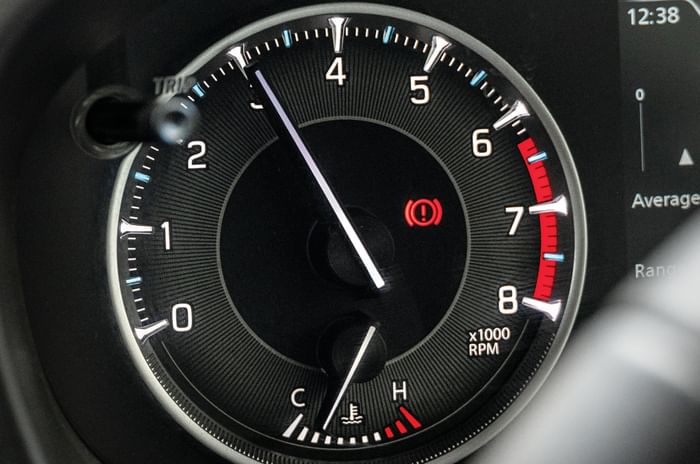With its 1.0 turbo engine, compact dimensions and fun demeanour, Toyota’s Taisor unleashes the charm initiative.
Sometimes, timing is everything. Just when I need a compact but quick-ish car to get from one end of the city to the other, in walks the Toyota Urban Cruiser Taisor Neo-drive – Toyota’s version of the Maruti Fronx but with a name that does its best to confuse the hell out of you. Still, semantics and onomastics apart, what makes my eyes light up is that the Taisor Turbo is a relatively light car with a nice 1.0 turbo engine and a sufficient amount of boost. So, while the crossover-like profile may help it look bulky, the Taisor with a Boosterjet engine and a 5-speed manual weighs in at just over one tonne: 1,030kg, to be precise. And it isn’t just the 100hp; it also has 147.6Nm of torque that the engine puts out between 2,000rpm and 4,500rpm.

The presence of a turbo, along with extra power and torque, makes this a fun crossover.
This is primarily why it’s a happy camper in the city. Driving across town in start-stop traffic, what impresses is the relative lack of turbo lag. Sure, there is a zone where engine responses are relatively slow – around 1,200rpm – but responses are better by 1,500rpm, and power keeps getting stronger. This is primarily because this is a direct-injection engine (the only one in the Maruti range) that makes peak torque relatively early. The small turbo can be spooled up quickly due to the lower resistance it offers, and the engine even gets a small amount of e-boost from the mild-hybrid system.

Light, easy and precise, the manual gearbox is good to use. Needs a sixth gear, though.
This is why the 1.0 turbo is quite friendly to drive even in start-stop traffic, and unlike most turbos, I don’t mind letting it off the boil. In addition, the relatively responsive bottom end is also a reason why this engine delivers some good economy numbers, especially if you can resist squeezing down on the throttle.

The dead pedal sometimes comes in the way when I press the clutch. Not nice.
However, the latter is something I find difficult to resist, and that’s because, after 2,000rpm, the Taisor ramps up its power delivery in a linear push that gets stronger and stronger as you wind up the powerband. Sure, Suzuki’s Boosterjet could have had 10-15hp more, and power delivery doesn’t have that spike of boost that makes turbocharged cars so much fun. Still, the additional performance and light weight make this one of the most fun compact cars around, the ramp up in performance carrying on till around 6,000rpm. And that means my early morning drives from one end of Mumbai’s new inner-city highway – the Coastal Road – to the other en route for our Modern Classic Rally in Kalina are especially fun. The sweeping elevated sections and light traffic allow me to wind through the gears, and what’s nicer is that there is a real tachometer, a real dial and a real needle to follow.

It helps that you can see all around, but the resolution needs to be better to see obstacles.
While the 5-speed gearbox is slick enough, and you can heel and toe easily, the clutch is placed too close to the dead pedal and often comes in the way when I am trying to depress the clutch fully. Also, don’t much care for the plastic quality on the dash or quality levels in general. The seats are a bit too soft, and the cabin lacks a secure place to put my phone. The Toyota-Maruti screen, however, is much improved and has been relatively glitch-free, as is the voice quality on the carphone. What also makes this car quite practical is that it has a decent-sized boot, good ground clearance, and it’s easy to park with its 360-degree camera. The resolution, though, could have been better. And though it isn’t uncomfortable per se, the ride could have been more comfortable. Still, the Taisor is one of the most characterful, practical and enjoyable cars to drive in its class. The cherry on the top – the Taisor looks more balanced and interesting, especially with those headlights and the two-tone bodywork.
Also see:
Toyota Taisor real world fuel economy tested, explained

